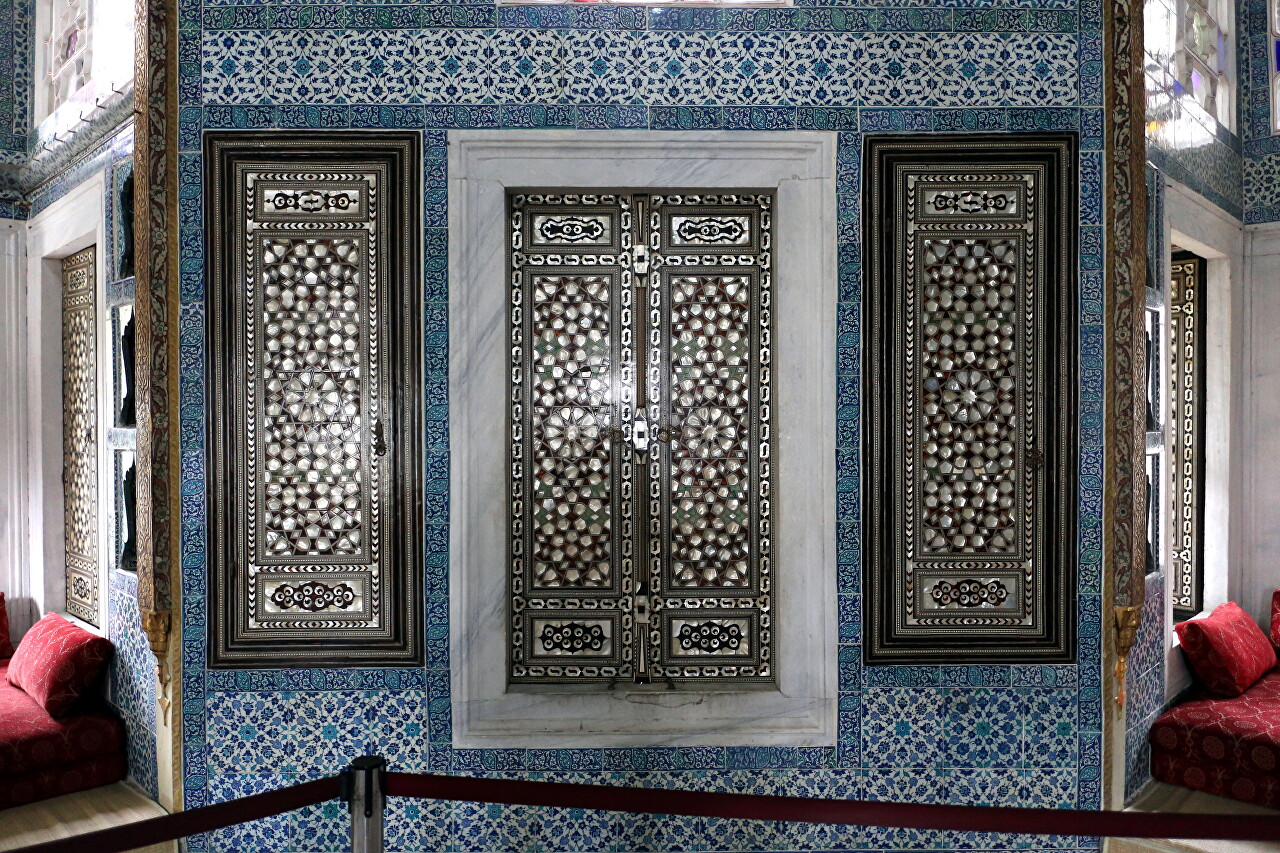Yerevan Pavilion, Topkapi
This pavilion is located in the northern corner of the Fourth Courtyard, called Sofa-i Hümâyun, between the Marble Terrace and the pavilion of the Sacred Mantle and Holy Relics. It was built in 1636 on the occasion of the victorious completion of the Yerevan expedition of Murad IV, for which it received its name Revan Köşkü.
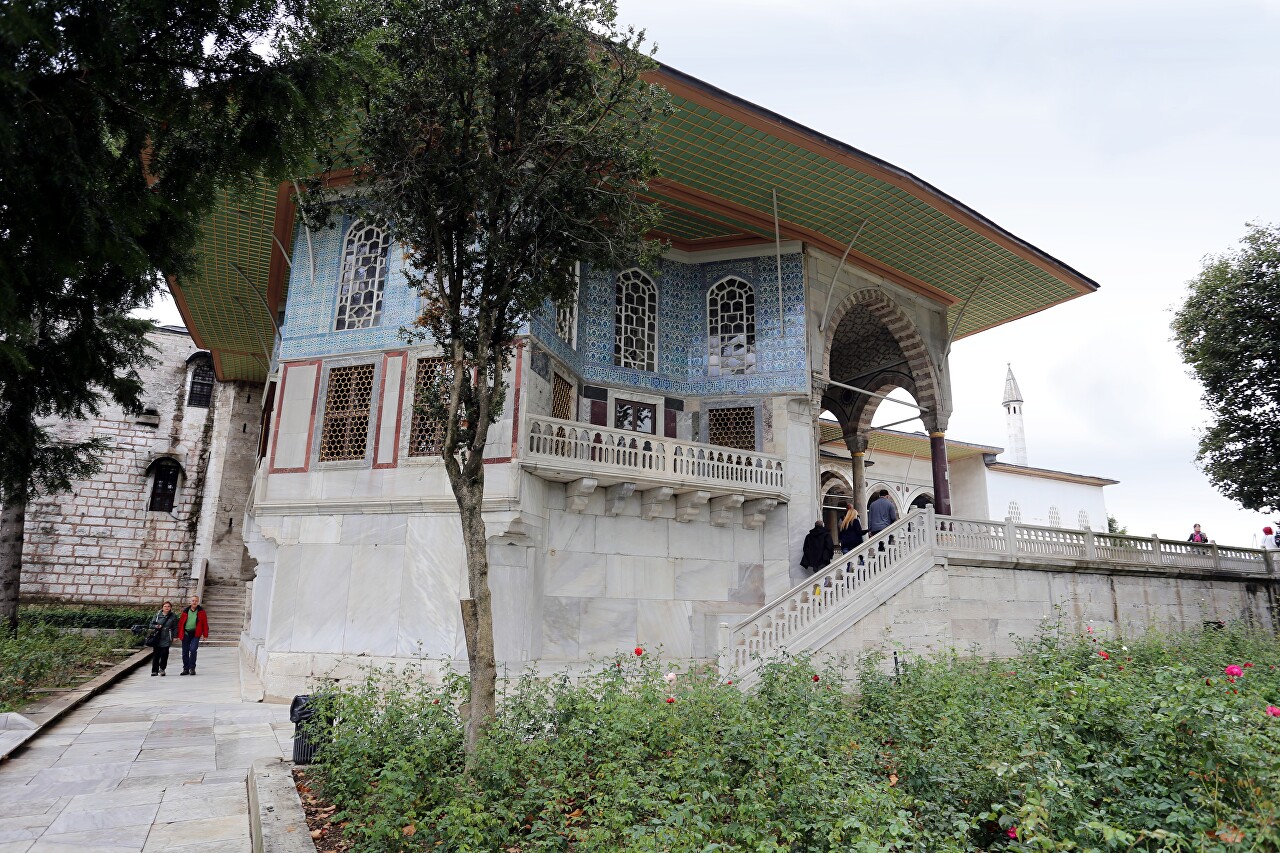
The Yerevan Pavilion is one of the latest examples of classical Ottoman architecture. The identity of the architect is not known exactly, but historians suggest that it could have been Hasan Agha or Kasim Agha (Hasan Agha, Kasım Agha).
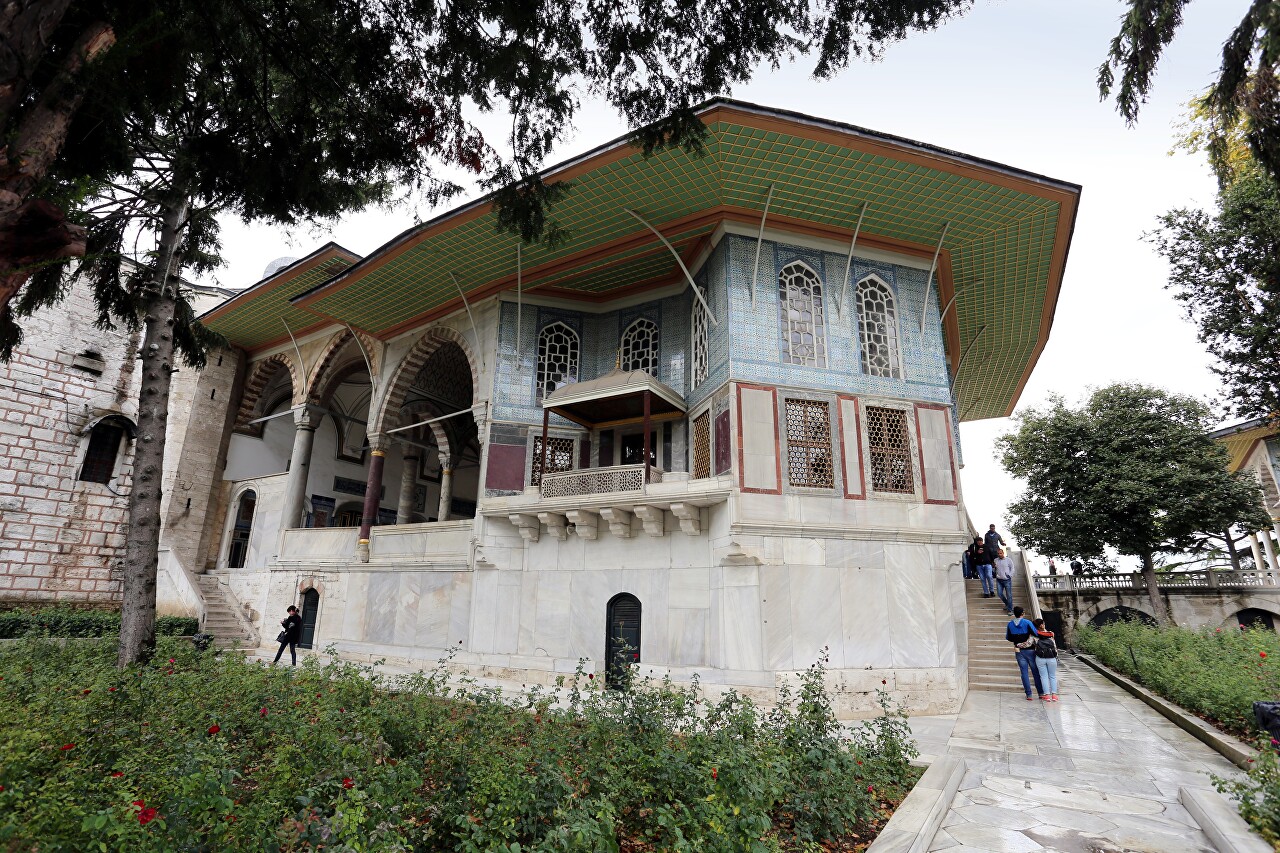
The building was built as a summer apartment for the Sultan's rest, as evidenced by the balcony-gazebo opening into the Rose Garden, where the Sultan drank coffee. The facade on which the gazebo is located is designed in the form of a niche, violating the uniformity of other facades, which indicates the priority of functionality over architectural harmony. Nevertheless, this accessory adds originality to the appearance of the task. The gazebo has a wooden roof on twisted columns, facing the garden of the fourth courtyard.
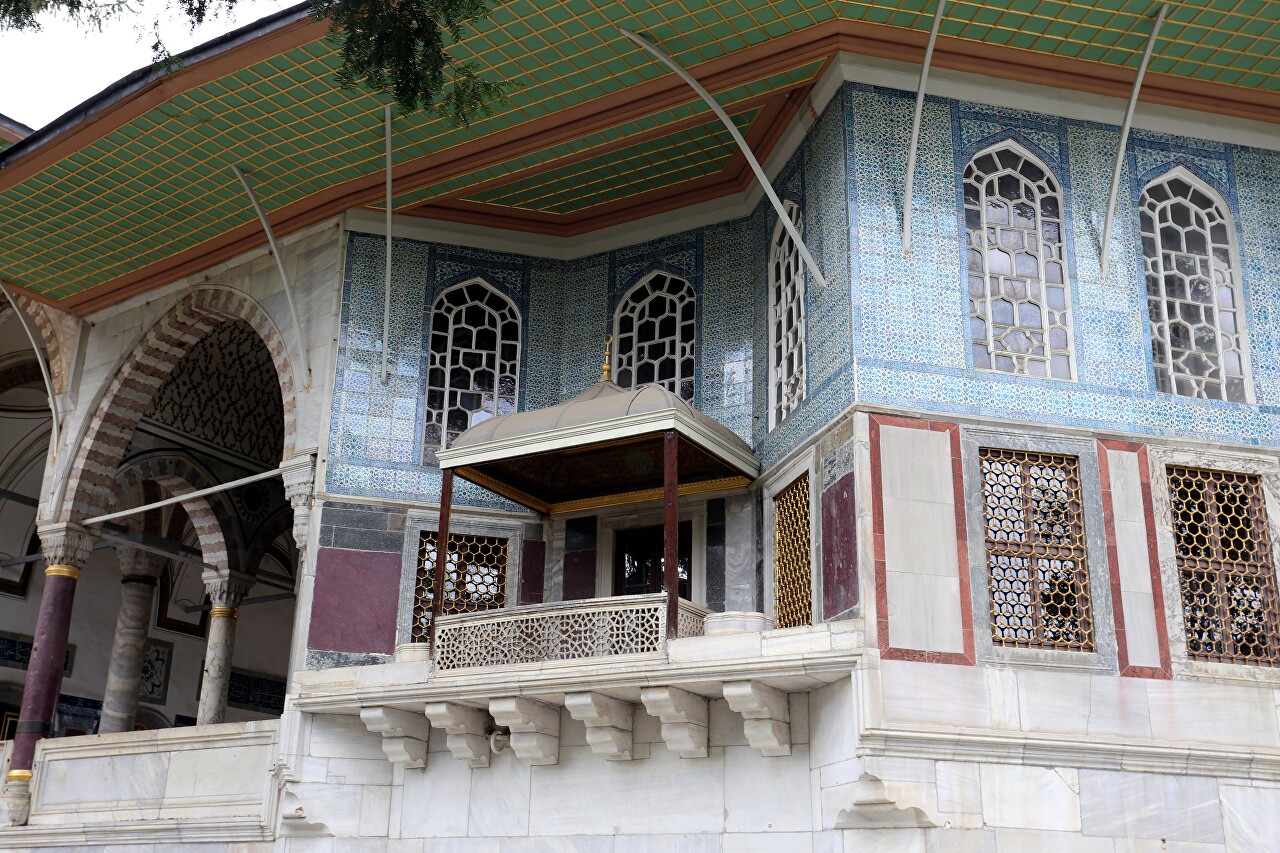
Above the entrance to the pavilion, you can see a golden ligature in Persian, which can be translated as "dervish hut". Perhaps the sultan received traveling preachers here.
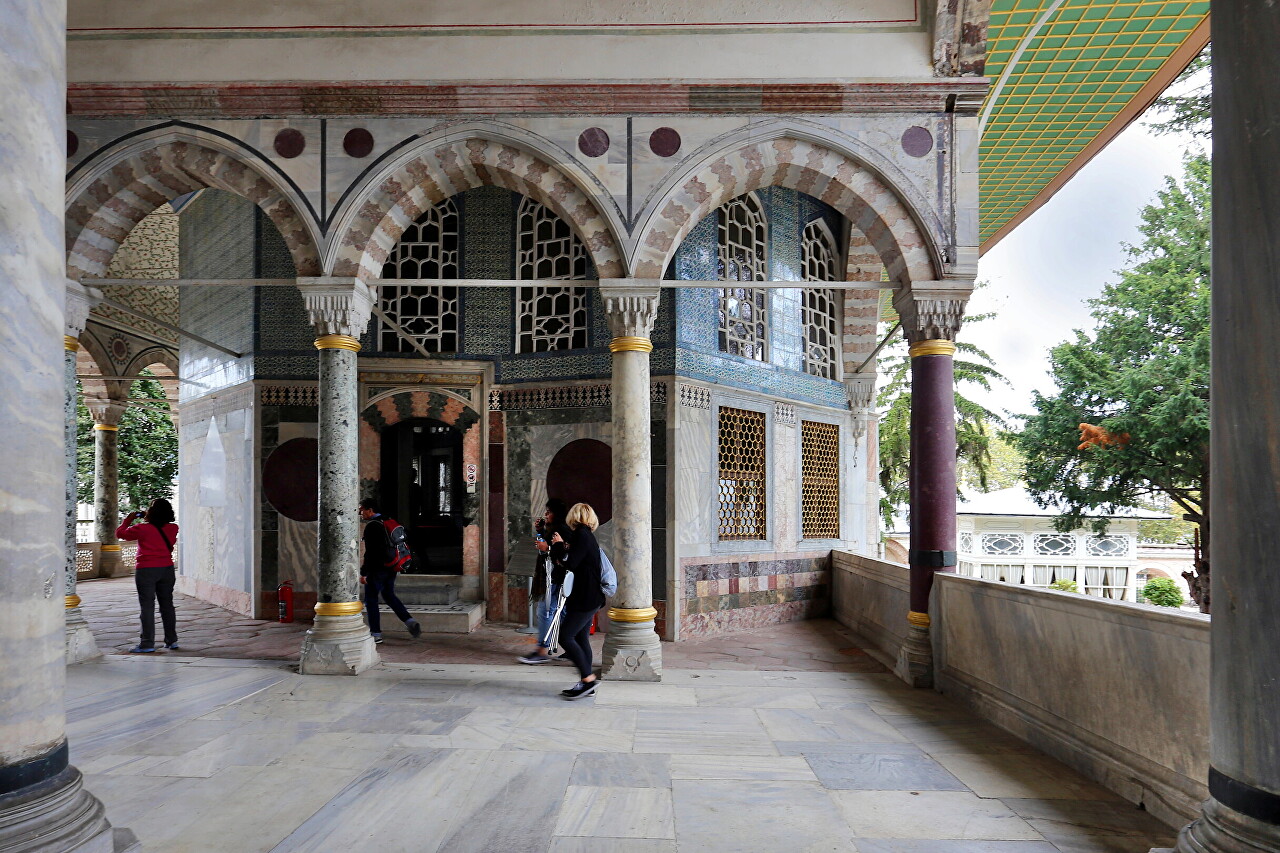
Subsequently, the pavilion was used for the manufacture and storage of Sultan's turbans and has another name Sarık Odasi (Chamber of turbans), since 1733 it housed a library.

The room has two rows of windows, the upper ones are decorated with colored glass, the lower ones with hexagonal honeycomb bars. For heating, a fireplace covered with copper sheets with hammered patterns was used.
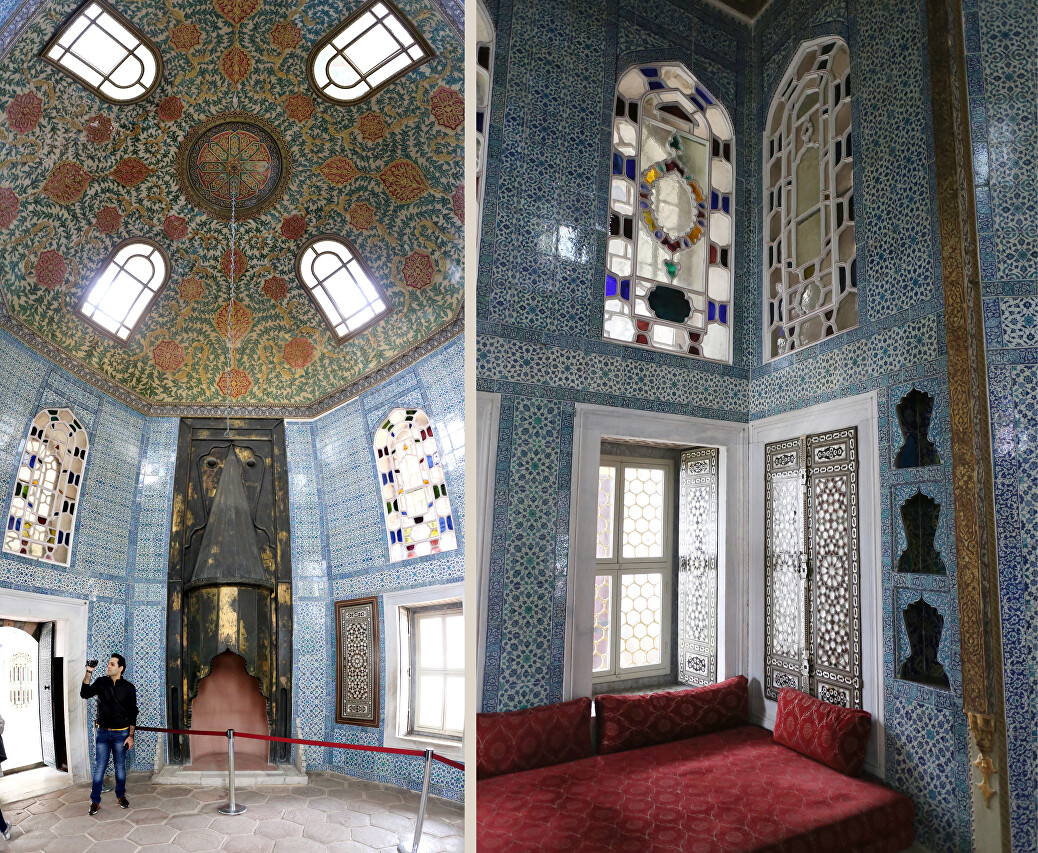
The octagonal dome also has four large windows, making the interior space very bright.
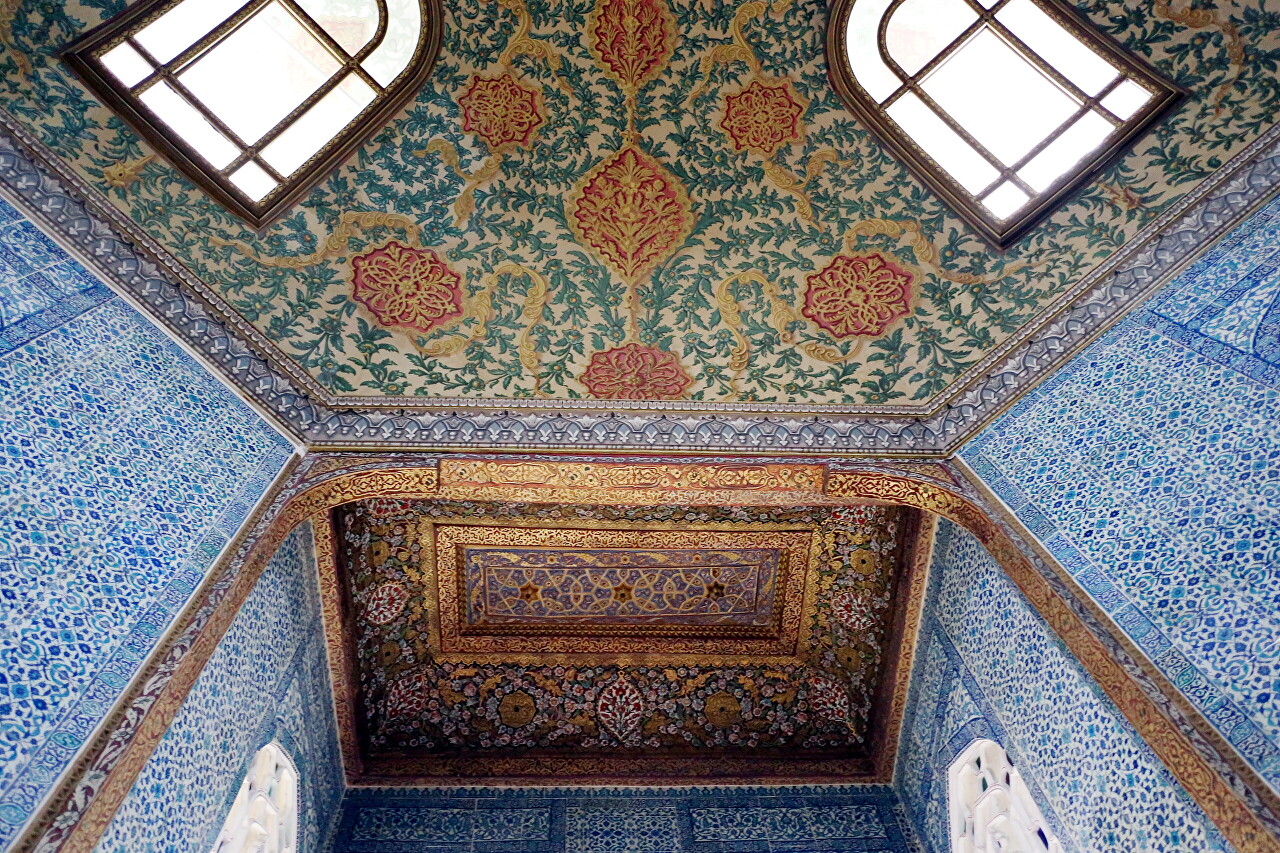
Both outside and inside the walls are lined with ceramic tiles in blue and light blue tones with images of plant and geometric ornaments.
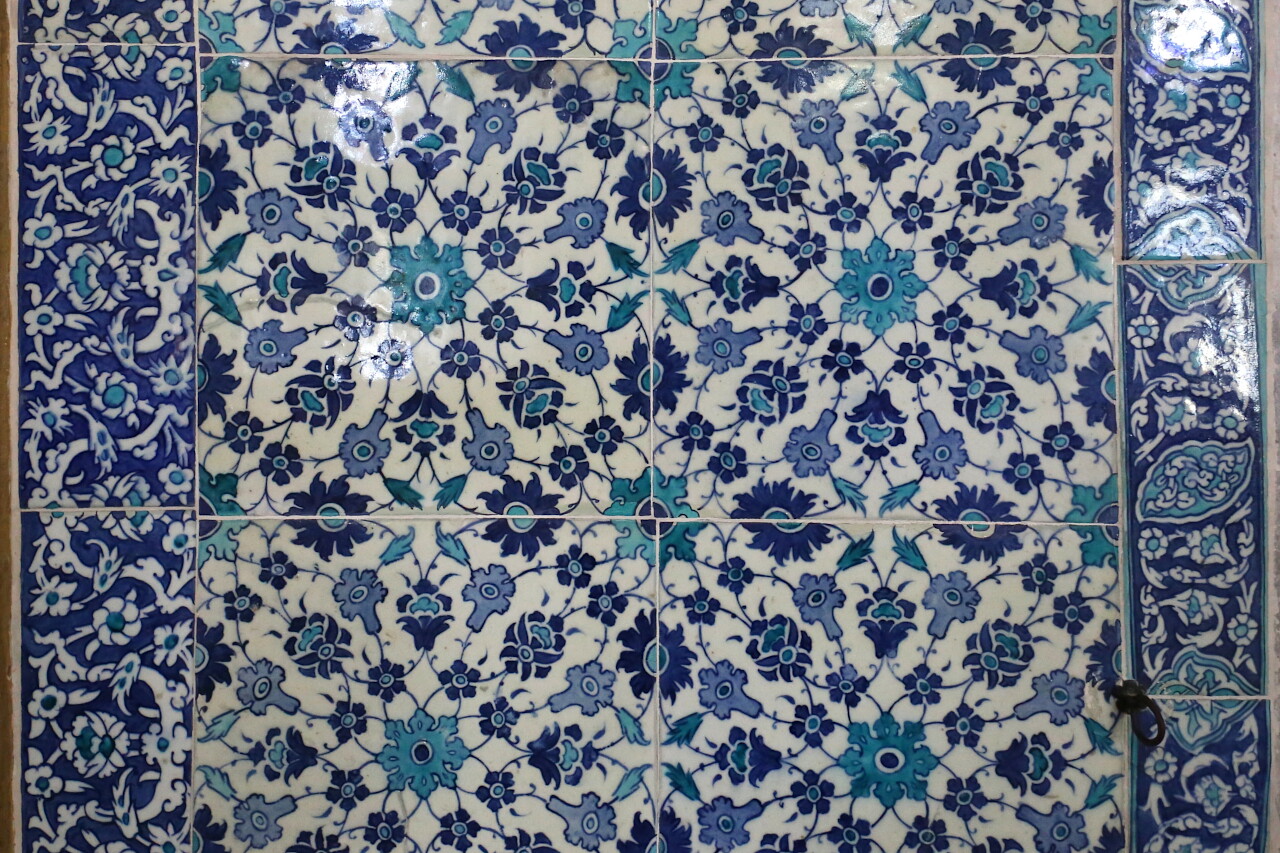
The walls have built-in wardrobes with wooden doors, which are decorated with tortoiseshell and ivory inserts.
